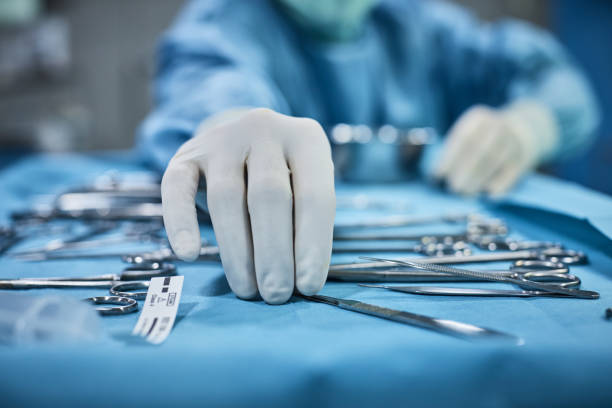Surgical Instruments are a particular tool that surgeons use during significant operations. These tools are primarily used to open the soft tissues, used during the removal of bone, dissect the lesion, and sometimes remove the abnormal structures during treatment.
Every surgical tool has its function, so choosing the appropriate surgical instrument for specific treatment is essential. Examples of cutting instruments include surgical blades, knives, scissors, and scalpels. Retractors tools used during surgery are Gelpi and Weitlaner. Grasping and holding tools include tissue forceps and homeostatic forceps.
Here are 12 surgical instruments that you must have during a major surgery
Dissecting Forceps
This is one of the most used instruments. It is also known as pick-ups, grabbers, dissectors, and thumb forceps. It somewhat looks like a pair of tweezers and comes in different sizes. During a surgery, dissecting forceps are an excellent instrument for grabbing a swab or needles, but this surgical tool's most important function is holding tissue with its thin pointed tip.
Hinged forceps
Hinged forceps look like scissors, but it is nothing like it. The two hands are like a blade that presses together rather than cutting. The size of hinged forceps depends on the treatment type. It is another commonly used medical tool amongst other medical supplies that Peak Surgicals sells.
Clamps
Clamps look like hinged forceps. Their function is to block the blood flow from the tissues and crushing tissue, such as vessel occlusion.
Probes
Probes are long, thin, and simple tools that range in size and purpose. Probes are typically used to explore or examine the anatomy, fistulae, and sinus tracts.
Handheld retractors
Handheld retractors are surgical tools that require an assistant to hold and operate. They are made up of three major components;
- handle that goes into the assistant's hand,
- a blade that enters the patient, and
- a shaft that connects the two hooks, teeth, straight angles, and curves are among the many shapes available for the blades.
Self-retaining retractors
This instrument is beneficial when it comes to using extra hands. It frees the assistant's job and reduces the fatigue in the muscle for a lengthy procedure.
Scissors
It comes in a variety of shapes and sizes. Although angled and curved scissors are commonly used, most look like simple metal scissors. Suture scissors are generally straight, while fine dissecting scissors have a slight curvature at the tip, which is vital as an aid.
Scalpels
The blades are disposable, but scalpel handles are frequently included in instrument sets, also known as a 'B.P. handle. Because they come in different sizes, pay attention to how the surgeon handles the scalpel.
Diathermy
An energy device also has cut and clotting properties and tears through tissue. It operates by heating the skin and works with a high-frequency electrical current.
Suturing
This is used to hold a suture needle between your teeth.
Suction
It is the most critical surgical tool and helps clean the unwanted blood and other fluids during surgery or any primary treatment.
Hammers
Usually used in orthopedics but is one of the powerful surgical tools.
Peak surgical provides these and many more medical supplies at highly affordable rates.
